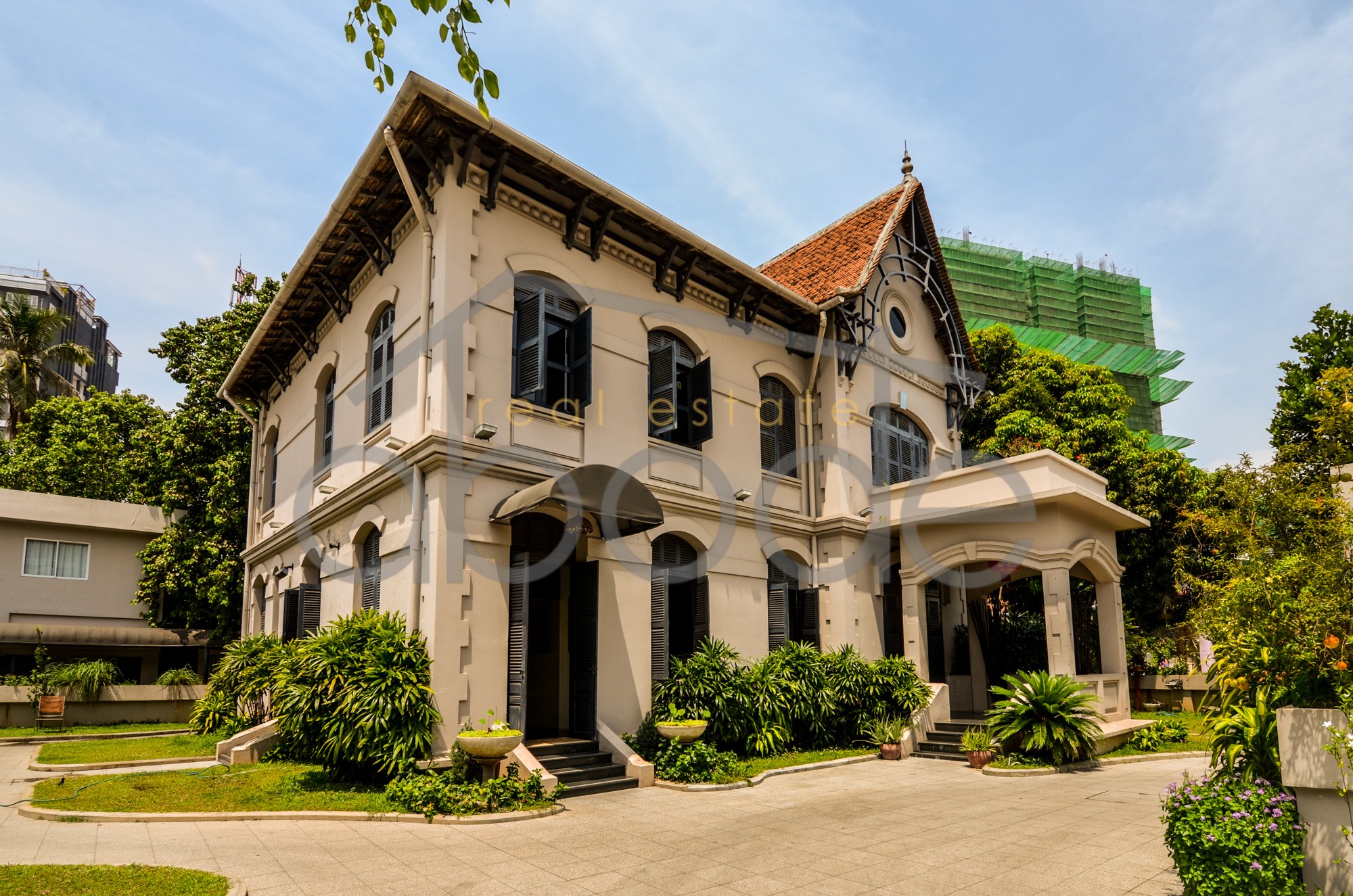The gentrified Sangkat of Chaktomuk and the areas around Wat Phnom are where the first villas from French colonial times appeared in Phnom Penh.
A short history of Phnom Penh villas
Phnom Penh was previously known as Krong Chaktomuk Serei Mongkol (‘City of the Brahma’s Faces’).
Loosely translated as “the place of four rivers giving happiness and success to the Khmer Kingdom, the highest leader as well as the unconquerable city of the God Indra of the great kingdom”.
It was later shortened to Krong Chaktomuk (City of Four Faces), and later Phnom Penh which developed into an important hub for French colonialists.
Its wide roads, beautiful gardens and grand villas and colonial mansions earned it the undisputed title ‘Pearl of Asia’ in the 1920s. From this time, the city expanded rapidly.
Chaktomuk is located in Daun Penh; an area under transformation with countless new developments and infrastructure upgrades.
It is a culturally significant area with its landmarks like Wat Botum Park, Botumvatey Pagoda and Independence Monument.
It is also very popular for its many restaurants, cafes, embassies, NGO offices, and boutique hotels.
French colonial Indochina
France gained significant control over mainland Southeast Asia in the 1860s. It included Cochin-china (southern Vietnam), Cambodia, the remainder of Vietnam and Laos.
In 1887, these areas became a federation of protectorates called French Indochina.
Cambodia entered the French protectorate in 1863 when King Norodom sought assistance to fend off Siam and Vietnam and he signed an agreement in August that year.
The government seat officially moved from Oudong to its present location in 1866 and, from then on the capital of Cambodia expanded.
The first modern stone structure built was the Royal Palace, in 1870 and soon afterward, stone ‘Chinese shophouse style’ buildings appeared along the riverfront.
This style adorns much of SE Asia, characterized by rows of buildings 15 – 30 metres deep. The ground floors are used for business and the upstairs as residences.
In the 1880s, colonial buildings clustered near Wat Phnom and much of the city was in swamps full of wooden and bamboo buildings.
However, in late 19th century, fires swept through the city, the most famous being the Great Fire of May 1894, after which brick and cement became the new materials of choice.
With a growing population, development sped up, including draining of wetlands, Sisowath Quay expansion, canal, bridge, Post Office and Treasury building construction.
The 20th Century and today
France retained control of Cambodia for much of the first half of the 20th century and many colonial buildings were constructed then, including the Police Station, Hotel Le Royal and many large villas near the Palace.
By the 1930s, the canals were filled and converted to garden boulevards, such as Sihanouk Blvd and Street 108.
In 1935 the Boeung Deco Lake was filled in to make way for the domed, art deco ‘Central Market’ (Phsar Thmey) which opened for business in 1937.
This was reputedly Phnom Penh’s heyday and many reported it then as Asia’s most beautiful city. Even today, in Boeung Reang, Chaktomuk, BKK 1 and Wat Phnom, you can see glimpses of the majestic beauty.
In Roman times, villas were large estates consisting of buildings around a courtyard and later were typically large, luxury free standing houses within large roaming gardens.
This definition has somewhat expanded over time and now, ‘villa’ can refer to a large home with a garden (of varying sizes).
Today, many developers try to reconstruct the grandeur of the former times and they offer a variety of options starting at $100,000 with some in excess of $10 million.
Boreys (gated communities) have many types for every budget, with a range of options – flat houses, shop front and villa style.
Some offer club houses, swimming pools, on site retail and children’s play areas and most have on site staff for garbage collection, security and common area maintenance.
Although the villa has changed over time, they bring back the halcyon days of the French era.
They give the average Khmer family a taste of what this southeast Asian city would have been like.
Abode Real Estate’s guide to the city.





